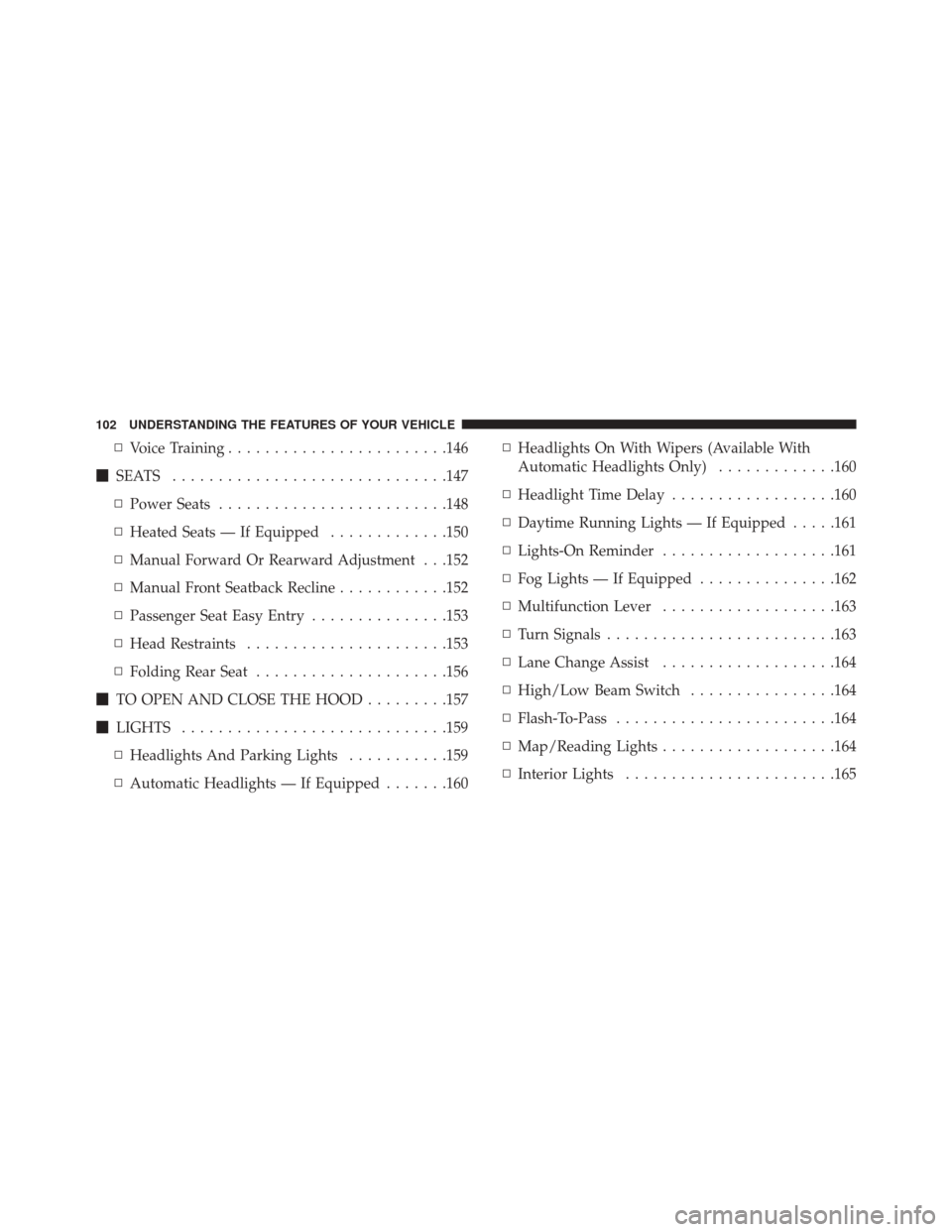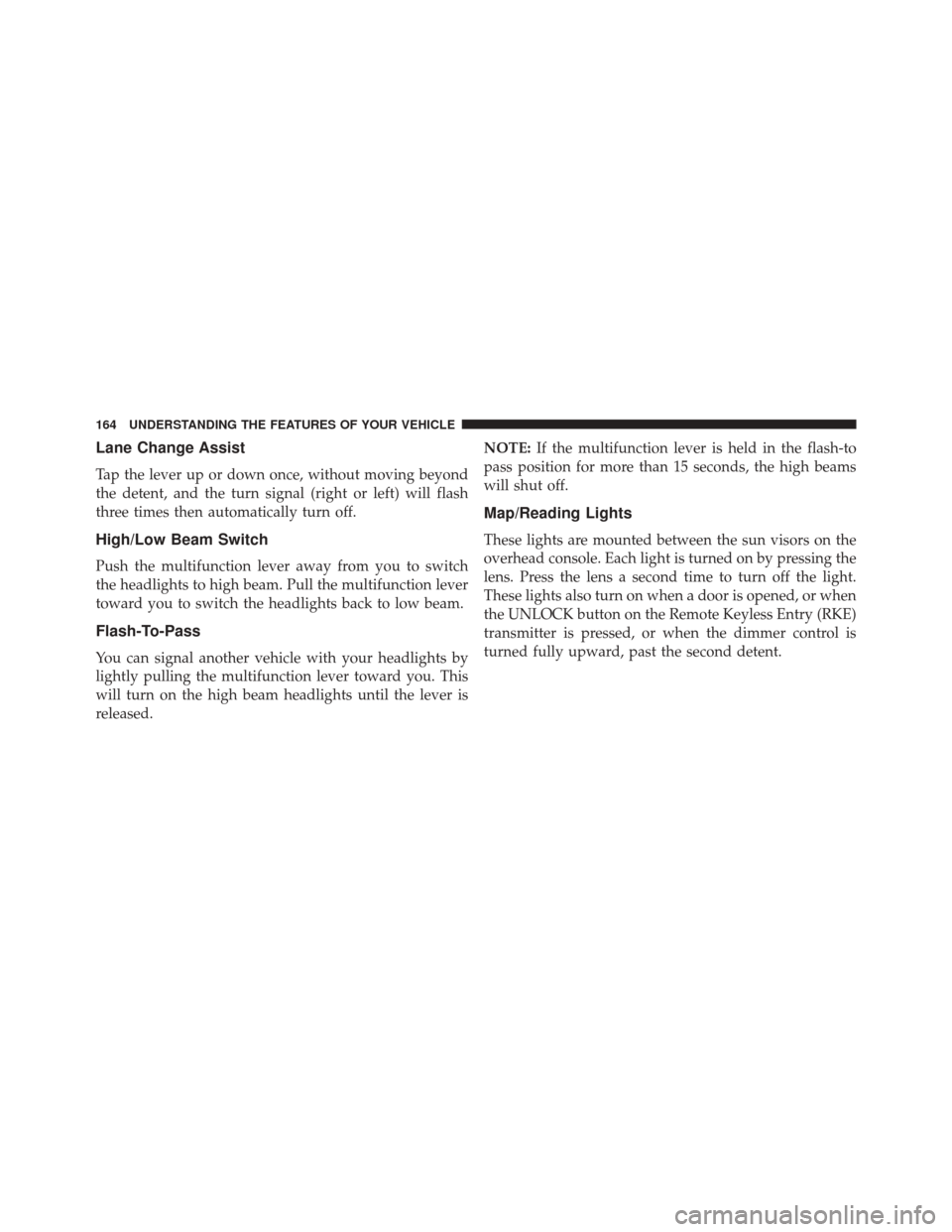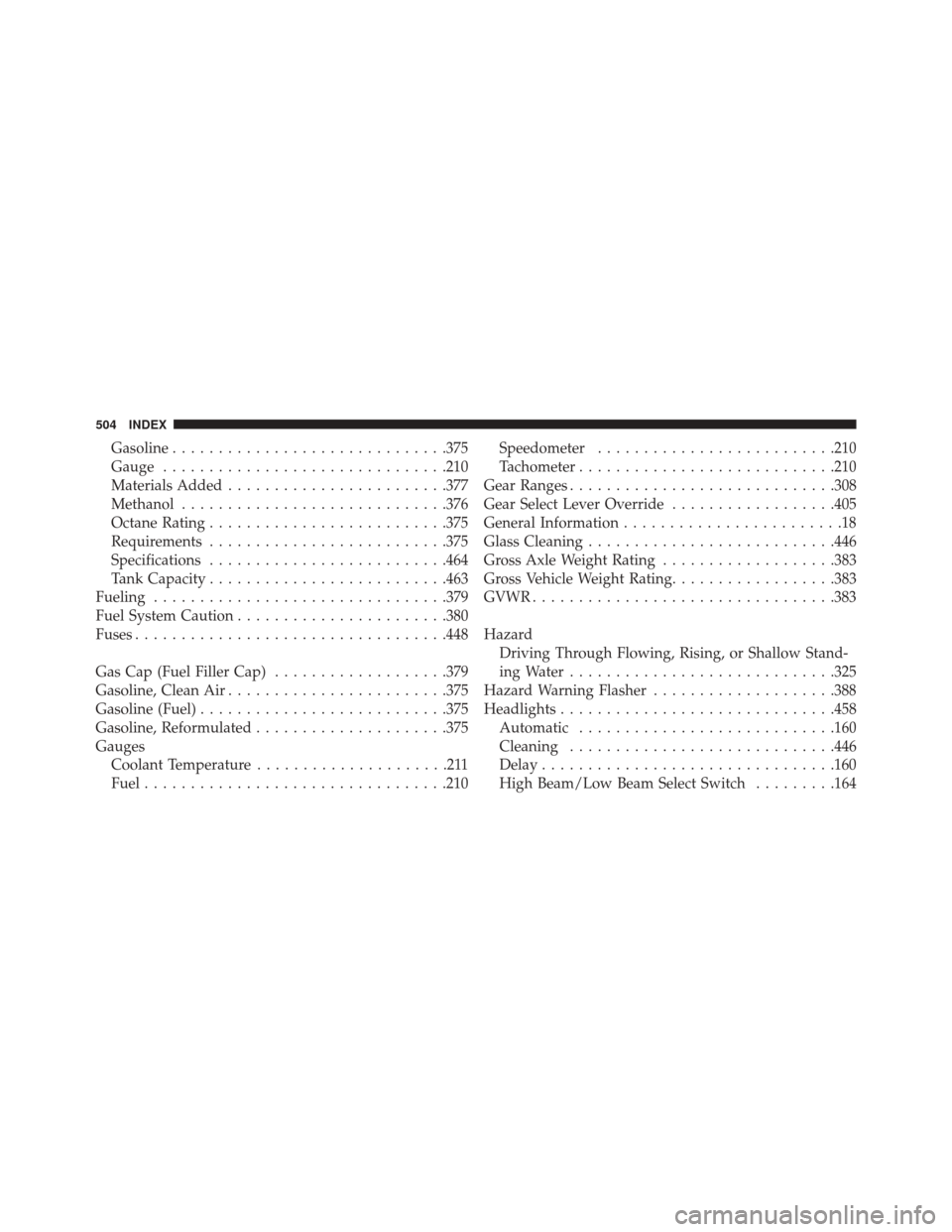Page 101 of 520

Periodic Safety Checks You Should Make Outside
The Vehicle
Tires
Examine tires for excessive tread wear and uneven wear
patterns. Check for stones, nails, glass, or other objects
lodged in the tread or sidewall. Inspect the tread for cuts
and cracks. Inspect sidewalls for cuts, cracks and bulges.
Check the wheel nuts for tightness. Check the tires
(including spare) for proper cold inflation pressure.
Lights
Have someone observe the operation of brake lights and
exterior lights while you work the controls. Check turn
signal and high beam indicator lights on the instrument
panel.
Door Latches
Check for positive closing, latching, and locking.
Fluid Leaks
Check area under vehicle after overnight parking for fuel,
engine coolant, oil, or other fluid leaks. Also, if gasoline
fumes are detected or if fuel, power steering fluid (if
equipped), or brake fluid leaks are suspected, the cause
should be located and corrected immediately.
2
THINGS TO KNOW BEFORE STARTING YOUR VEHICLE 99
Page 104 of 520

▫Voice Training ....................... .146
� SEATS ............................. .147
▫ Power Seats ........................ .148
▫ Heated Seats — If Equipped .............150
▫ Manual Forward Or Rearward Adjustment . . .152
▫ Manual Front Seatback Recline ............152
▫ Passenger Seat Easy Entry ...............153
▫ Head Restraints ..................... .153
▫ Folding Rear Seat .....................156
� TO OPEN AND CLOSE THE HOOD .........157
� LIGHTS ............................ .159
▫ Headlights And Parking Lights ...........159
▫ Automatic Headlights — If Equipped .......160▫
Headlights On With Wipers (Available With
Automatic Headlights Only) .............160
▫ Headlight Time Delay ..................160
▫ Daytime Running Lights — If Equipped .....161
▫ Lights-On Reminder ...................161
▫ Fog Lights — If Equipped ...............162
▫ Multifunction Lever ...................163
▫ Turn Signals ........................ .163
▫ Lane Change Assist ...................164
▫ High/Low Beam Switch ................164
▫ Flash-To-Pass ....................... .164
▫ Map/Reading Lights ...................164
▫ Interior Lights ...................... .165
102 UNDERSTANDING THE FEATURES OF YOUR VEHICLE
Page 164 of 520
Fog Lights — If Equipped
The front fog light switch is built into the head-
light switch. To activate the front fog lights, turn
on the parking lights or the low beam headlights and
press the headlight switch. To turn off the front fog lights,
either press the headlight switch again or turn off the
headlight switch.
An indicator light in the instrument cluster illuminates
when the fog lights are turned on.
NOTE:The fog lights will operate with the low beam
headlights or parking lights on. However, selecting the
high beam headlights will turn off the fog lights.
Fog Light Operation
162 UNDERSTANDING THE FEATURES OF YOUR VEHICLE
Page 166 of 520

Lane Change Assist
Tap the lever up or down once, without moving beyond
the detent, and the turn signal (right or left) will flash
three times then automatically turn off.
High/Low Beam Switch
Push the multifunction lever away from you to switch
the headlights to high beam. Pull the multifunction lever
toward you to switch the headlights back to low beam.
Flash-To-Pass
You can signal another vehicle with your headlights by
lightly pulling the multifunction lever toward you. This
will turn on the high beam headlights until the lever is
released.NOTE:
If the multifunction lever is held in the flash-to
pass position for more than 15 seconds, the high beams
will shut off.
Map/Reading Lights
These lights are mounted between the sun visors on the
overhead console. Each light is turned on by pressing the
lens. Press the lens a second time to turn off the light.
These lights also turn on when a door is opened, or when
the UNLOCK button on the Remote Keyless Entry (RKE)
transmitter is pressed, or when the dimmer control is
turned fully upward, past the second detent.
164 UNDERSTANDING THE FEATURES OF YOUR VEHICLE
Page 216 of 520

NOTE:•The “ESC Off Indicator Light” and the “ESC
Activation/Malfunction Indicator Light” come on
momentarily each time the ignition switch is turned
to ON/RUN.
• Each time the ignition is turned to ON/RUN, the
ESC system will be ON, even if it was turned off
previously.
• The ESC system will make buzzing or clicking
sounds when it is active. This is normal; the sounds
will stop when ESC becomes inactive following the
maneuver that caused the ESC activation.
13. Electronic Stability Control (ESC) OFF Indicator
Light — If Equipped
This light indicates the Electronic Stability Con-
trol (ESC) is off. 14. Oil Pressure Warning Light
This light indicates low engine oil pressure. The
light should turn on momentarily when the engine is
started. If the light turns on while driving, stop the
vehicle and shut off the engine as soon as possible. A
chime will sound when this light turns on.
Do not operate the vehicle until the cause is corrected.
This light does not indicate how much oil is in the engine.
The engine oil level must be checked under the hood.
15. High Beam Indicator
This indicator will turn on when the high beam
headlights are on. Push the multifunction lever
away from the steering wheel to switch the headlights to
high beam.
214 UNDERSTANDING YOUR INSTRUMENT PANEL
Page 414 of 520

▫Manual Transmission – If Equipped ........439
▫ Automatic Transmission – If Equipped ......439
▫ Rear Axle .......................... .441
▫ Appearance Care And Protection From
Corrosion .......................... .442
� FUSES ............................. .448
▫ Integrated Power Module ...............448
▫ Rear Power Distribution Center ...........451
� VEHICLE STORAGE ....................456
� REPLACEMENT BULBS .................456
� BULB REPLACEMENT ..................458
▫ Low Beam Headlamp, High Beam Headlamp,
Park/Turn Lamp — Models with Halogen
Headlamps — If Equipped ...............458 ▫
Low Beam Headlamp, High Beam Headlamp, and
Park/Turn Lamp — Models with High Intensity
Discharge (HID) Headlamps — If Equipped . . .458
▫ Front/Rear Side Marker Lamp ............459
▫ Tail/Turn and Stop Lamp ................459
▫ Center Tail/Backup Lamp ...............461
▫ Center High-Mounted Stop Lamp (CHMSL) . .461
▫ License Lamp ....................... .462
� FLUID CAPACITIES ....................463
�
FLUIDS, LUBRICANTS AND GENUINE PARTS . .464
▫ Engine ............................ .464
▫ Chassis ........................... .465
412 MAINTAINING YOUR VEHICLE
Page 460 of 520

BULB REPLACEMENT
NOTE:Lens fogging can occur under certain atmo-
spheric conditions. This will usually clear as atmospheric
conditions change to allow the condensation to change
back into a vapor. Turning the lamps on will usually
accelerate the clearing process.
Low Beam Headlamp, High Beam Headlamp,
Park/Turn Lamp — Models with Halogen
Headlamps — If Equipped
See your authorized dealer for bulb replacement.
Low Beam Headlamp, High Beam Headlamp, and
Park/Turn Lamp — Models with High Intensity
Discharge (HID) Headlamps — If Equipped
HID Headlamps
The headlamps are a type of high voltage discharge tube.
High voltage can remain in the circuit even with the
headlamp switch off and the key removed. Because ofthis, you should not attempt to service a headlamp bulb
yourself. If a headlamp bulb fails, take your vehicle to
an authorized dealer for service.
WARNING!
A transient high voltage occurs at the bulb sockets of
HID headlamps when the headlamp switch is turned
ON. It may cause serious electrical shock or electro-
cution if not serviced properly. See your authorized
dealer for service.
NOTE: On vehicles equipped with HID headlamps,
when the headlamps are turned on, there is a blue hue to
the lamps. This diminishes and becomes more white after
approximately 10 seconds, as the system charges.
458 MAINTAINING YOUR VEHICLE
Page 506 of 520

Gasoline............................. .375
Gauge .............................. .210
Materials Added ....................... .377
Methanol ............................ .376
Octane Rating ......................... .375
Requirements ......................... .375
Specifications ......................... .464
Tank Capacity ......................... .463
Fueling ............................... .379
Fuel System Caution ...................... .380
Fuses ................................. .448
Gas Cap (Fuel Filler Cap) ...................379
Gasoline, Clean Air ....................... .375
Gasoline (Fuel) .......................... .375
Gasoline, Reformulated .....................375
Gauges Coolant Temperature .....................211
Fuel ................................ .210Speedometer
......................... .210
Tachometer ........................... .210
Gear Ranges ............................ .308
Gear Select Lever Override ..................405
General Information ........................18
Glass Cleaning .......................... .446
Gross Axle Weight Rating ...................383
Gross Vehicle Weight Rating ..................383
GVWR ................................ .383
Hazard Driving Through Flowing, Rising, or Shallow Stand-
ing Water ............................ .325
Hazard Warning Flasher ....................388
Headlights ............................. .458
Automatic ........................... .160
Cleaning ............................ .446
Delay ............................... .160
High Beam/Low Beam Select Switch .........164
504 INDEX